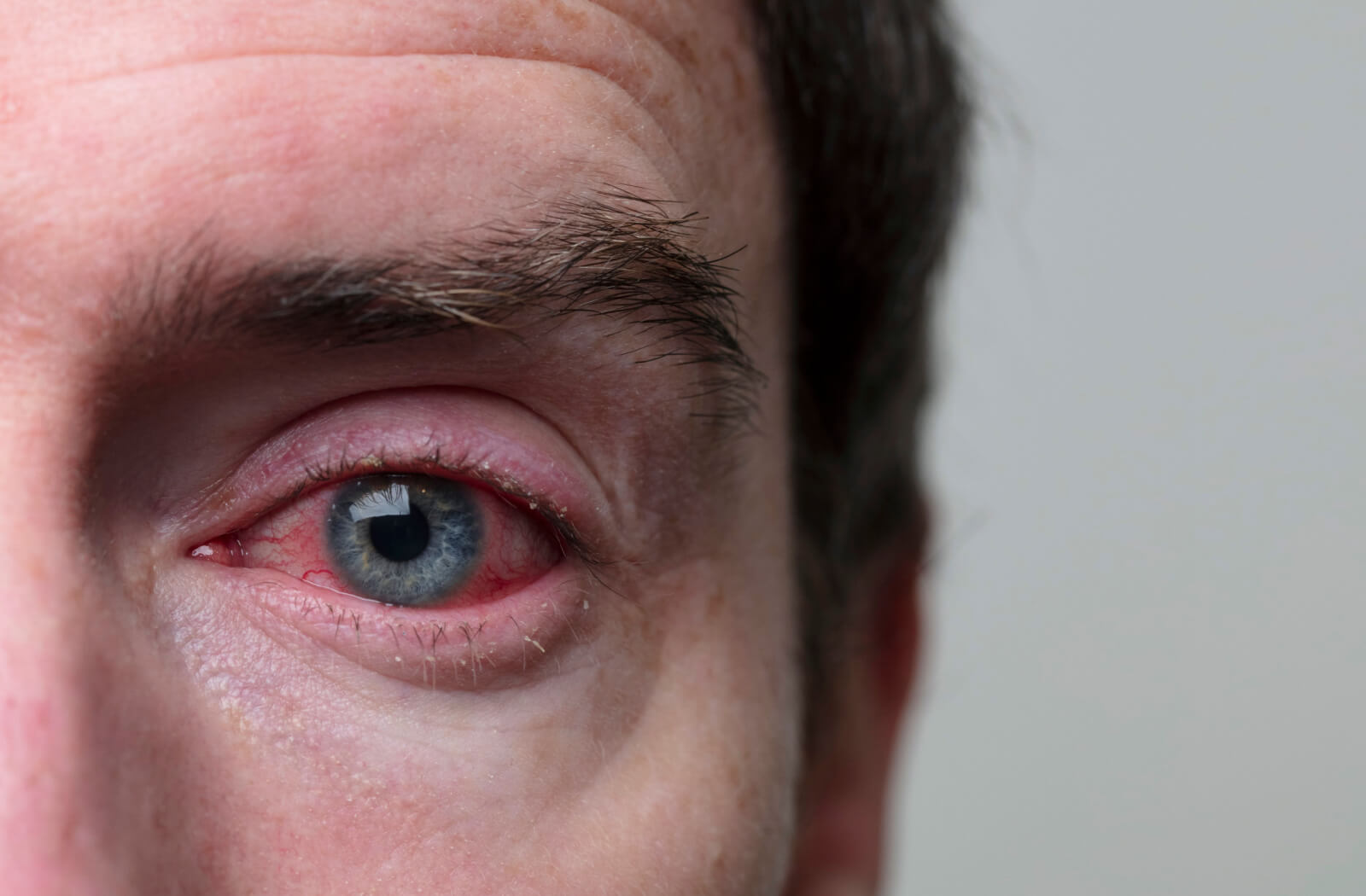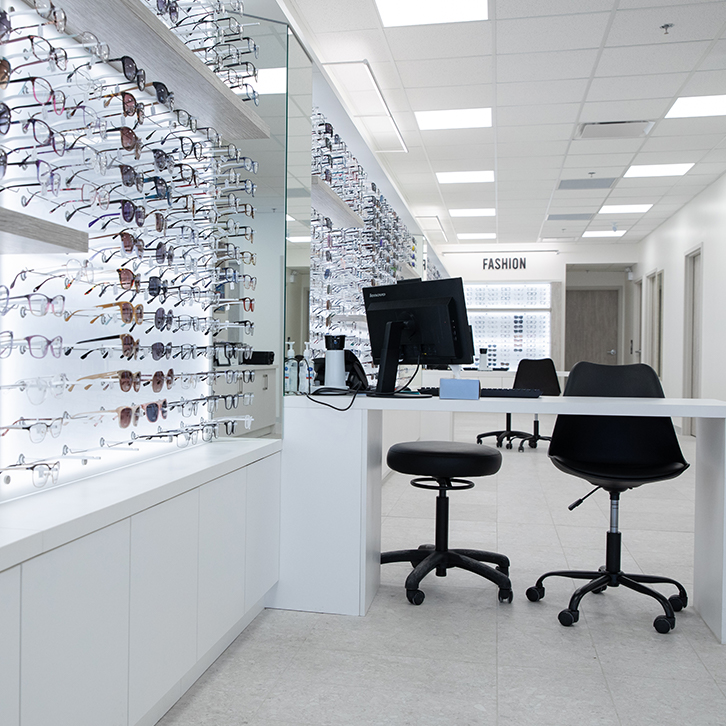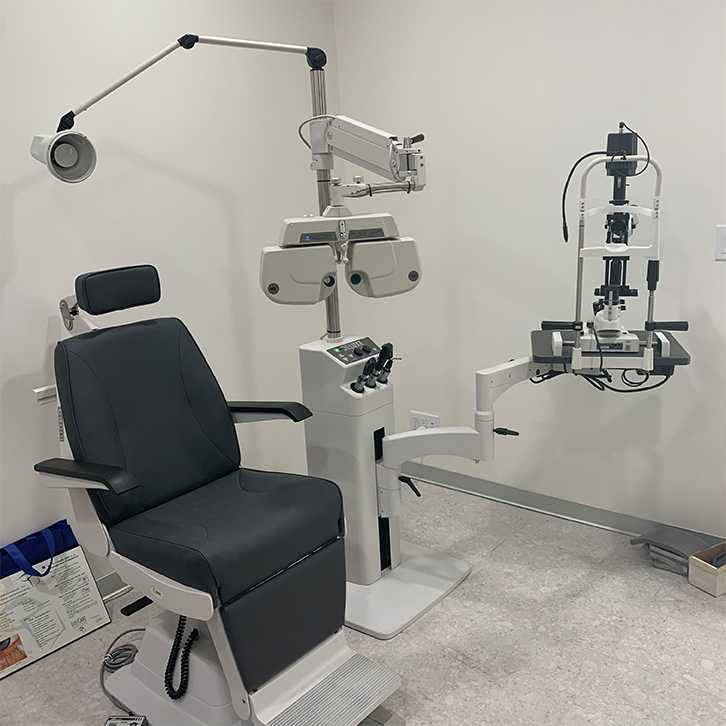Blepharitis is an eye condition that causes inflamed eyelids. It can be uncomfortable, leading to eyelid swelling, redness, and irritation.
It’s a common condition—37% to 50% of people get it at some point in their lives especially in Alberta which is owing to many factors such as the climate and the natural skin flora. But there is an upside: blepharitis is not contagious like other eye conditions, such as pink eye.
Even though it’s not contagious, you should visit your eye doctor for an eye exam if you experience symptoms of blepharitis. Eye exams allow your doctor to examine your eyes and eyelids and recommend the proper treatment for relief from symptoms.
What Is Blepharitis?
Blepharitis is often a chronic condition that usually affects both eyelids but doesn’t cause permanent damage to your eyesight. It occurs when the oil glands in the eyelids become clogged or irritated, leading to redness, swelling, and itching.
Causes of Blepharitis
The exact cause of blepharitis is unknown, but it’s associated with several different diseases and other conditions, such as:
- Clogged or malfunctioning oil glands
- Bacterial infection
- Dry eyes
- Skin conditions such as rosacea, characterized by facial redness
- Seborrheic dermatitis
- Allergies to contact lens solutions, eye medications, or eye makeup
- Eyelash mites that interfere with oil production
Types of Blepharitis
There are 2 types of blepharitis, and individuals can have one or both together. These include:
- Anterior blepharitis: This occurs when the eyelashes attach to your eyelid on the outer side of your eyelid. Bacteria on your skin or dandruff from your scalp or eyebrows can cause this. A rare cause of anterior blepharitis is allergies or mites.
- Posterior blepharitis: This occurs on the inner edge of the eyelid or the part that touches your eye. A common cause is clogged oil glands in your eyelids. However, other causes are skin conditions like rosacea and scalp dandruff.
Can You Get Blepharitis from Someone Who Has It?
Certain bacteria found on most people’s skin don’t cause any problems. However, when these bacteria overgrow, they cause blepharitis, but it’s not contagious.
You may be at a higher risk of developing blepharitis if you have certain underlying conditions, such as:
- Dandruff
- Rosacea
- Oily skin
- Allergies that affect your eyelashes
Blepharitis Symptoms
The common symptoms of blepharitis include the following:
- A feeling of something in your eye
- Red and swollen eyes or eyelids
- Burning or stinging eyes
- Tearing, foamy tears, or small bubbles in tears
- Itching
- Sensitivity to light
- Dry eyes
- Crusty or flaky eyelids or eyelashes
More severe symptoms or health problems of blepharitis can include:
- Blurry vision
- Eyelashes that fall out or grow in the wrong direction
- Cornea swelling
- Stye (a red, painful bump on the eyelid)
- Chalazion (a hard, painless lump on the eyelid)
- Chronic red eyes
Treatment for Blepharitis
Blepharitis often doesn’t go away completely, so it’s important to prevent the spread of bacteria or other irritants that can exacerbate the condition. Treatment may include a combination of measures to manage symptoms and address the underlying causes of blepharitis.
Self-care measures to keep the eyelids clean and free of crusts can include the following:
- A warm compress over the eyes to loosen deposits on the eyelids like Bruder or OcuSci
- Using eyelid wipes like I-lid ‘n lash wipes that are specifically designed to remove allergens from the eyelids
- Avoiding makeup
If your symptoms persist even after adopting self-care measures, your eye doctor may prescribe other treatment methods:
- Medications that fight infection include antibiotics (eyedrops, creams, and ointments) for relief of symptoms and to treat bacterial infection of the eyelids. If these are not effective, you may need oral antibiotics.
- Steroid eye drops or ointments can help control inflammation, redness, and irritation. You may be prescribed anti-inflammatory drugs with antibiotics.
- Topical cyclosporine, such as Restasis, can offer relief of blepharitis symptoms.
- Treating the underlying cause of blepharitis, such as seborrheic dermatitis, rosacea or other diseases.
BlephEx
BlephEx is an in-office treatment option used for eyelid cleaning and hygiene. It uses a small handheld machine with a rotating sponge to remove excess bacteria, biofilm, and bacterial toxin buildup on the lashline and eyelids. Treatment is gentle, easy, and quick.
How to Control Blepharitis
Because blepharitis is frequently a chronic condition, it may help to follow a cleaning routine to manage and control your symptoms. Routine steps can include:
- Cleaning your eyelids twice a day with blepharitis symptoms or once a day when symptoms improve.
- Avoid wearing contacts and eye makeup while you have symptoms.
Blepharitis Relief for Comfortable Vision
Blepharitis isn’t contagious, but because of bacterial overgrowth, it can reoccur, and for some, it may never completely go away.
If you have chronic blepharitis and are searching for effective treatment and management strategies, book an appointment with Dr. Bishop & Associates for treatment options and relief for comfortable vision.



















